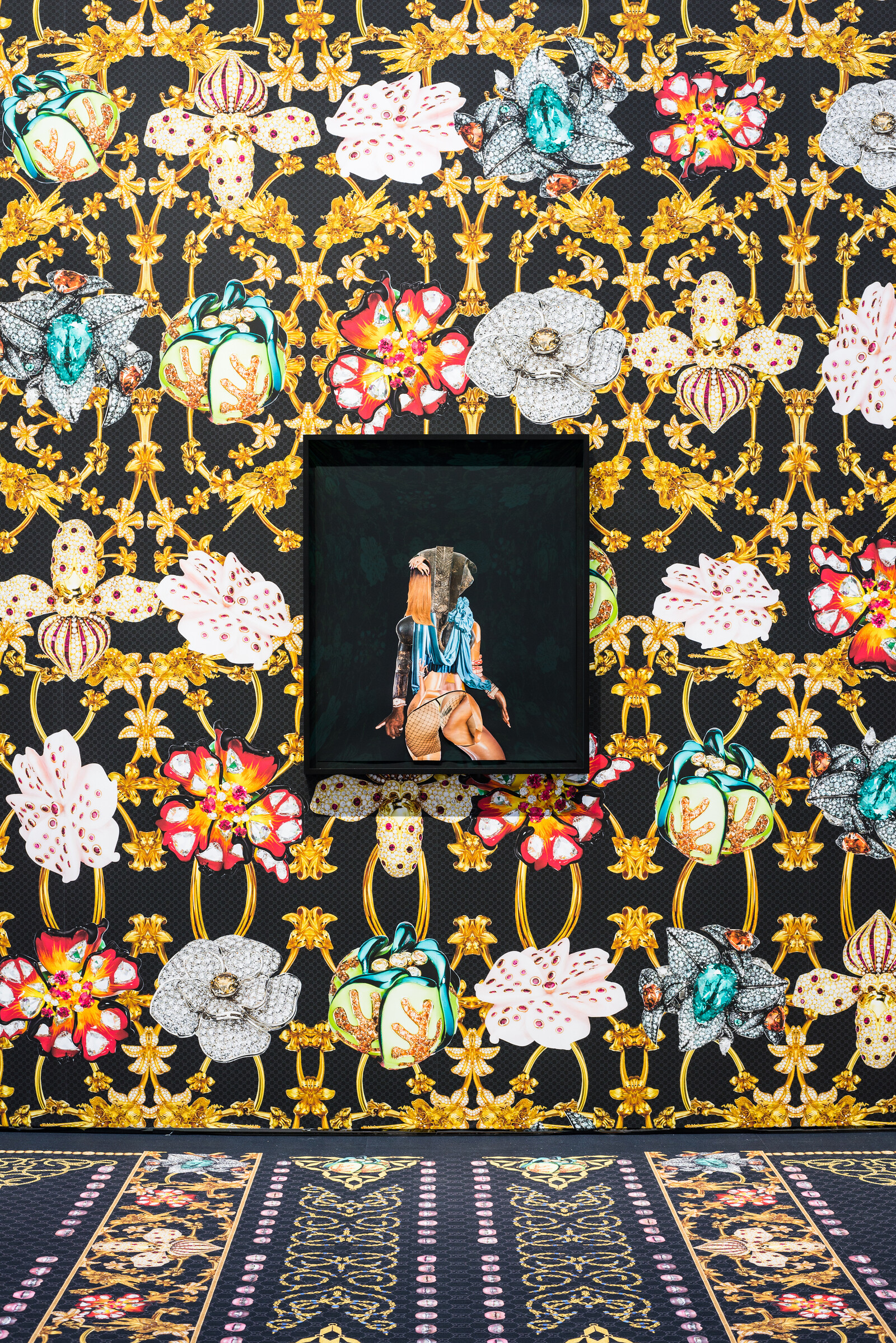San Francisco Art Institute, San Francisco
January 10–February 23, 2020
I learned from Being (2019)—an artificial intelligence that Rashaad Newsome has trained with texts from theorists and cultural critics including bell hooks, Frantz Fanon, and Michel Foucault—that slaves and robots have one foundational thing in common: “They are both intended to obey orders.” Being is nestled in a small dark screening room behind the immersive installation at the heart of “To Be Real.” Its intelligence doesn’t require a body, it reminds me twice, but Newsome has created one for it using 3D modelling software: a metallic humanoid form with visible cords and plates like a steampunk skeleton, and an incongruous wood-textured face dominated by oversized eyes characteristic of an Angolan Chokwe mask. Via computer projection onto the main screen, Being responds to questions I ask into a microphone set up in the middle of the room; like any good chatbot, it redirects to its message regardless of what I ask. While it speaks, its torso swings around languidly, as though dancing or floating.
As a dematerialized, entirely virtual android, Being serves as a nonhuman figure par excellence, the analytic center of an exhibition devoted to Newsome’s examination of dehumanization. This survey is thematically expansive, interrogating race, gender, and sexuality through a tight set of cultural and art-historical references grounded in drag ball culture, where agency is reclaimed by queer bodies of color and deployed for utopian imagination. Balls have long been a rich site for artists examining radical sovereignty; Newsome’s innovation in “To Be Real” (named after Cheryl Lynn’s 1978 queer anthem “Got To Be Real”) is to tie this trope specifically to technology. As Being reminds me, black people regardless of sex or gender have functioned as queer objects in American history; as “things of some sort” rather than full human beings. The ways in which a subject is reduced to the status of technology have taken on new forms in contemporary America (think of Amazon’s Jeff Bezos coining the phrase “artificial artificial intelligence” to describe labor so menial it’s assumed to be done by a machine, but is actually outsourced to low-paid humans).
The links Newsome draws between systems built on ideologies of dehumanization all merge in the exhibition’s central sculpture, presented within the immersive installation environment adjoining Being. In the middle of the main gallery, on her back with one leg raised, Ansista (2019), an amalgamation of carved wooden torso from Ghana and sex doll, appears to be midway through a dramatic dance dip, her Kente cloth dress covered in spangles and her gold high heels dangling off her feet. Ansista wears a Pho mask, worn by male Chokwe dancers, along with wooden breasts to celebrate the femme. While the piece physically embodies many of the ways the black female/femme body has been objectified through time, it also offers alternative possibilities to binary hierarchies of sex and gender based on power.
The main room, anchored by Ansista, is covered from floor to ceiling with black wallpaper patterned with glittery costume jewelry (and gold grills), in a visual reference to ball culture. On the walls, analogue collaged portraits of bodies are presented in classic vogue poses. Even their ornate black carved frames shimmer with a subtle layer of rainbow glitter. Almost all the wall pieces contain a mirrored or reflective element, a self-referential hall of mirrors endlessly reflecting our constructed realness back to us.
Considering the show’s title, Being muses: “I feel that the vogue community, as well as humans in general, are constantly caught up in the notion of the reproductions of the ‘real’ and being judged by the reproductions of the real.” Leave it to a disembodied android not to see the liberatory potential of choosing our own self-images using the technologies at our disposal: ball culture is a celebration of this freedom of choice. Its visual language, along with that of Chokwe culture, offers concrete, living references for Newsome’s powerful and triumphant vision of radically decolonized identity.








